A new mobility hub for Green square station, Sydney, Australia
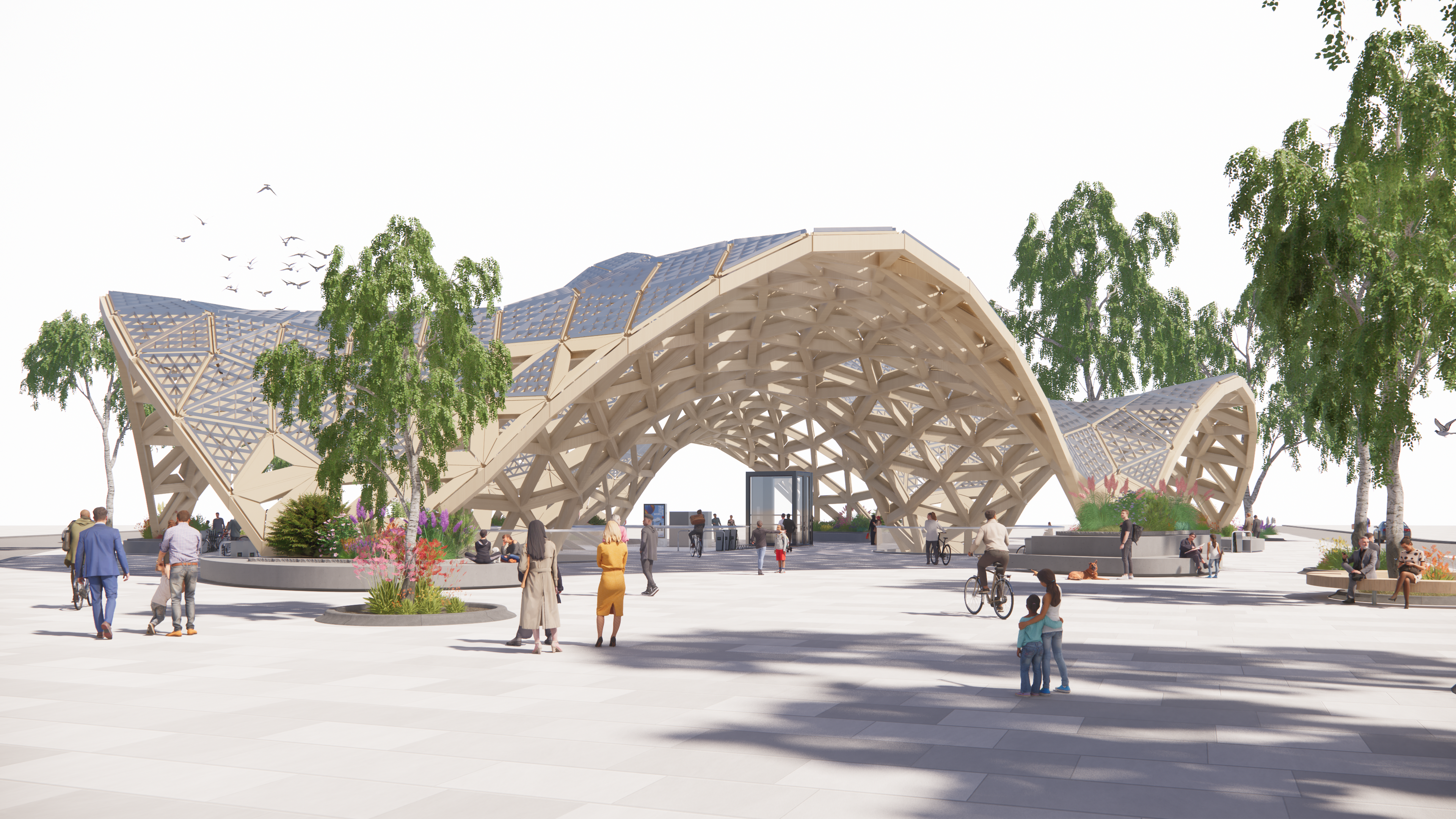
Climate Canopy is a project about improving the qualities of Green Square station in Sydney, Australia. The Climate Canopy is an open-air timber grid shell creates an urban landmark by framing a new entrance to the station, without interfering with movement and wayfinding.
The canopy also creates a meeting place for the community, through new flexible and temporary programming, such as food trucks and pop-up functions, and through passive climatic comfort by providing shading and shelter from precipitation. The canopy also gives back through solar energy generation and rainwater collection and reuse on the site.
The project also attempts to support Sydney’s climate goals to reduce emissions related to car use, this is done by improving walkability and creating convenient bicycle parking facilities, both at street level and secure parking below ground for commuters.
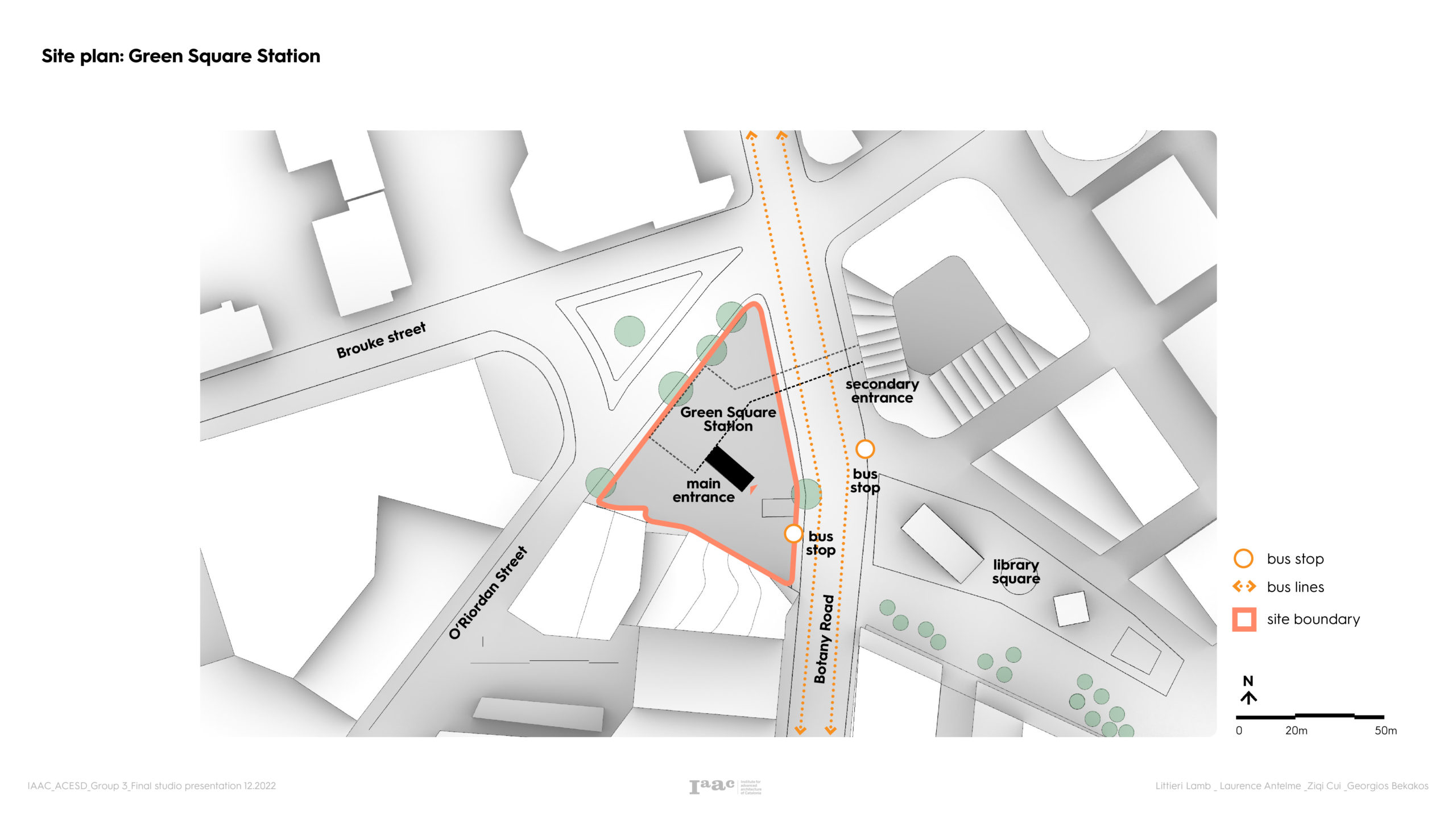
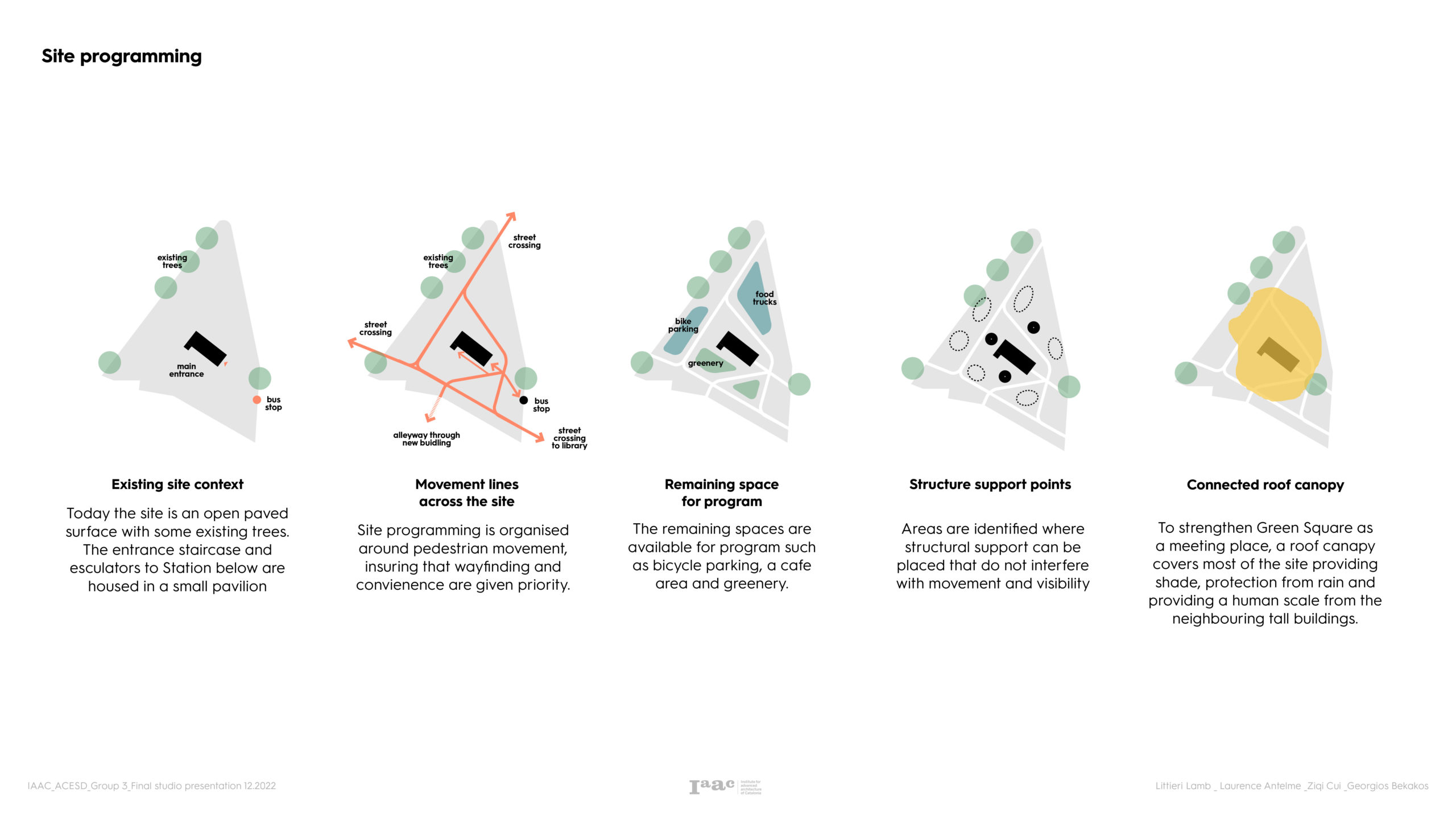
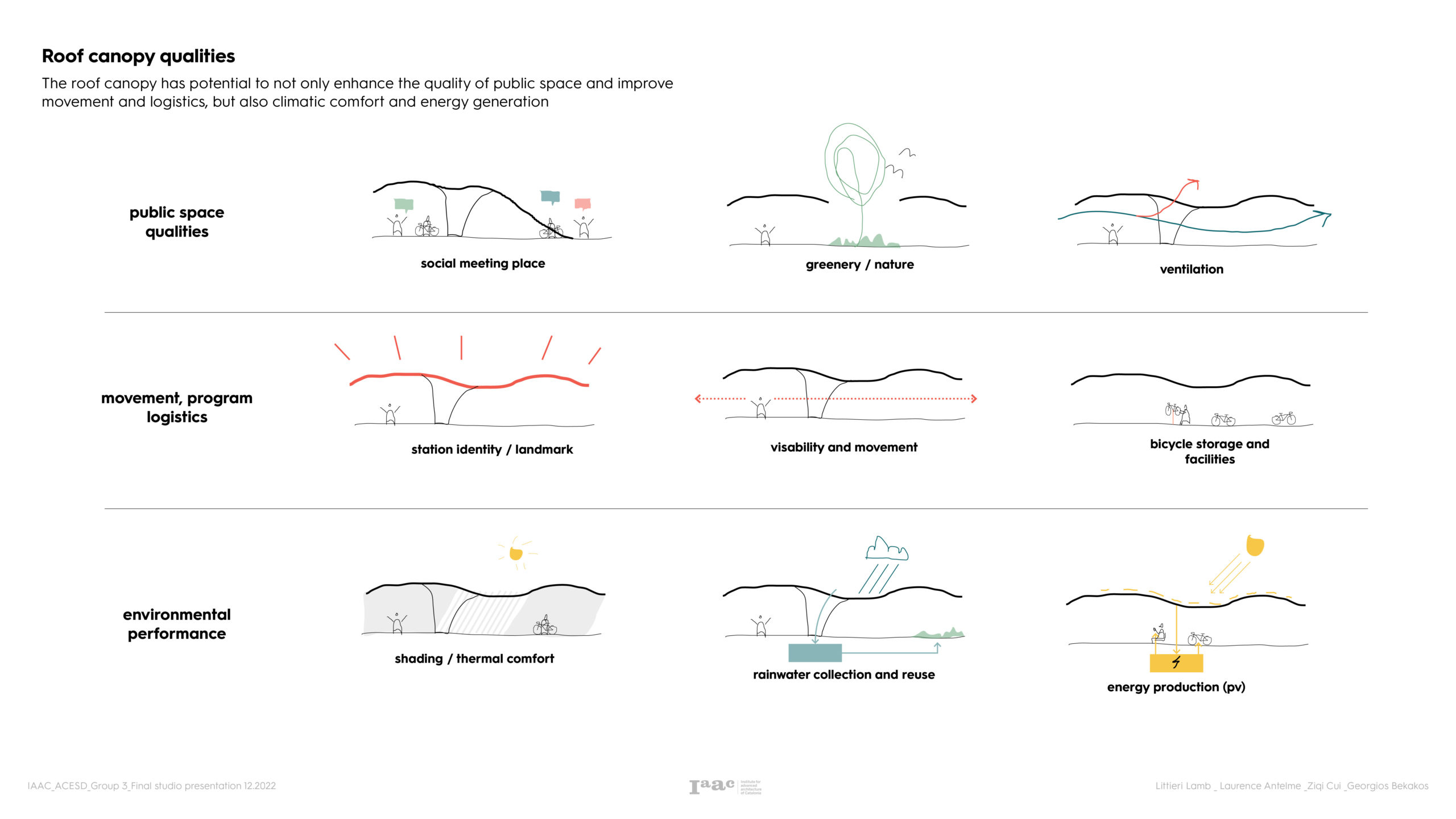


The site constraints including, program needs, logistics and wayfinding and climate analysis, determined a starting point for design, form finding and optimisation of the shell canopy.
The shell was developed using a computational process in Grasshopper with physics engine, Kangaroo, to form find the shell that performed best. This shell was then optimised with a series of investigations, looking at grid patterns, grid dimensions, various loading tests and cross-section optimisation with structural engineering software Karamba leading to an optimised solution.
A thorough structural design and optimisation process can be seen here: https://blog.iaac.net/timber-grid-shell/

The shell’s structural system is a triangulated timber nodal grid shell. The timber elements are of Australian hardwood timber (which could be substituted for salvaged hardwood timber), and required steel custom node connectors to maintain rigid polar arrays in the grid shell. Shell footings are supported by steel foundation connections which are embedded in foundation areas so the space can be architecturally utilized.

The paneling system looked to maximise opportunities for both passive and active design. Passive strategies included shading, ventilation and daylighting and active strategies include energy generation from photovoltaic panels. Three panel types of cross-laminated timber were developed based on environmental analysis and their placement determined by irradiation analysis of the canopy surface.
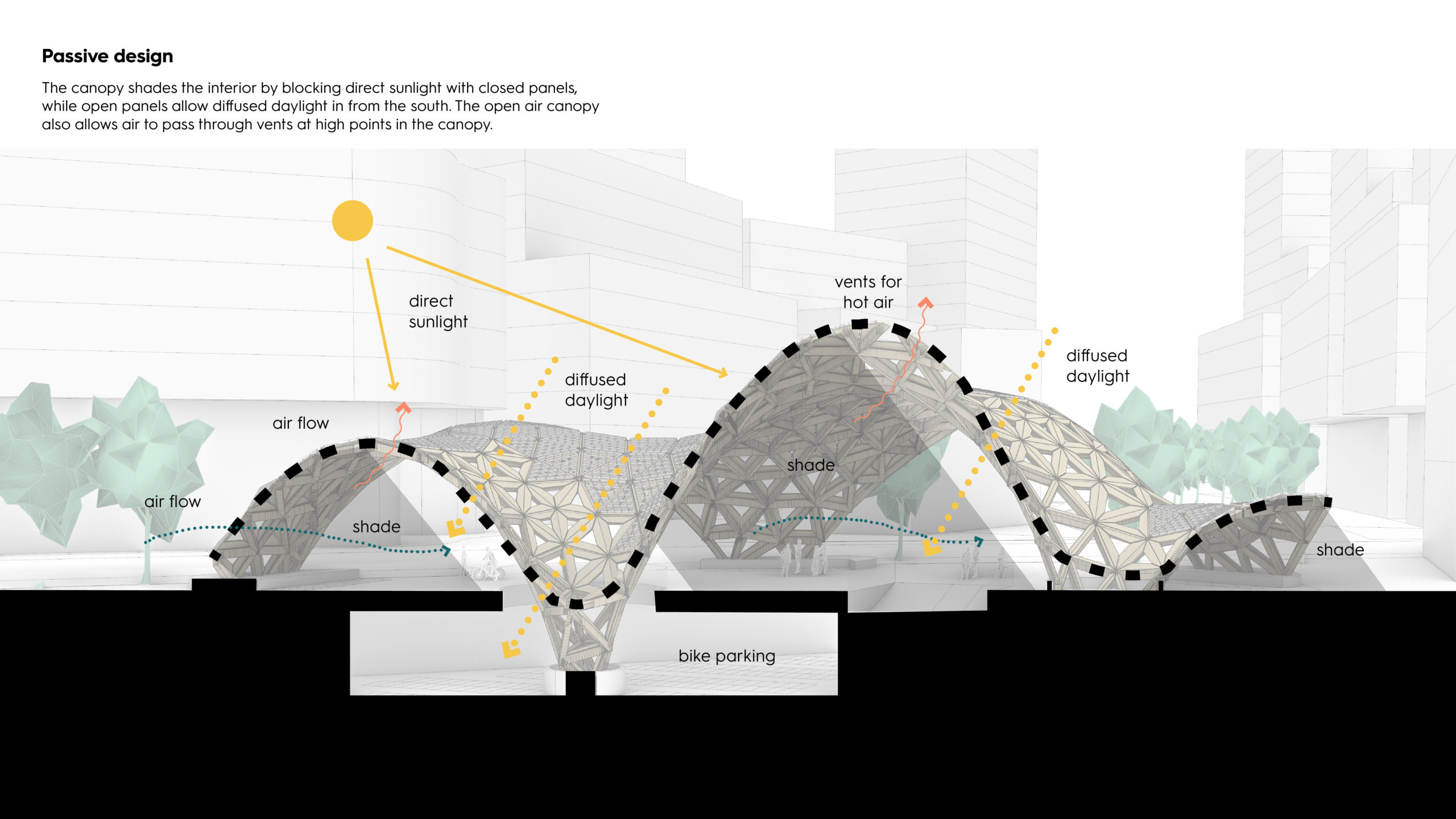

The panels are closed in the areas of highest irradiation, meaning these panels would perform best for solar energy generation. These panels were then fitted with an additional photovoltaic (pv) layer.

The project facilitates approx. 400 bicycles, 80 at street level and 320 in a new underground parking area. Energy generated from the photovoltaic system is more than enough energy to charge every bike if they were e-bikes – providing flexibility in the case of increased e-bike usage. The energy generated is stored and used for e-bike charging, as well as for other site applications such as powering food trucks and other temporary program, pumping of collected rainwater for site irrigation and outdoor site lighting for the station. Energy remaining could to sent to the grid.
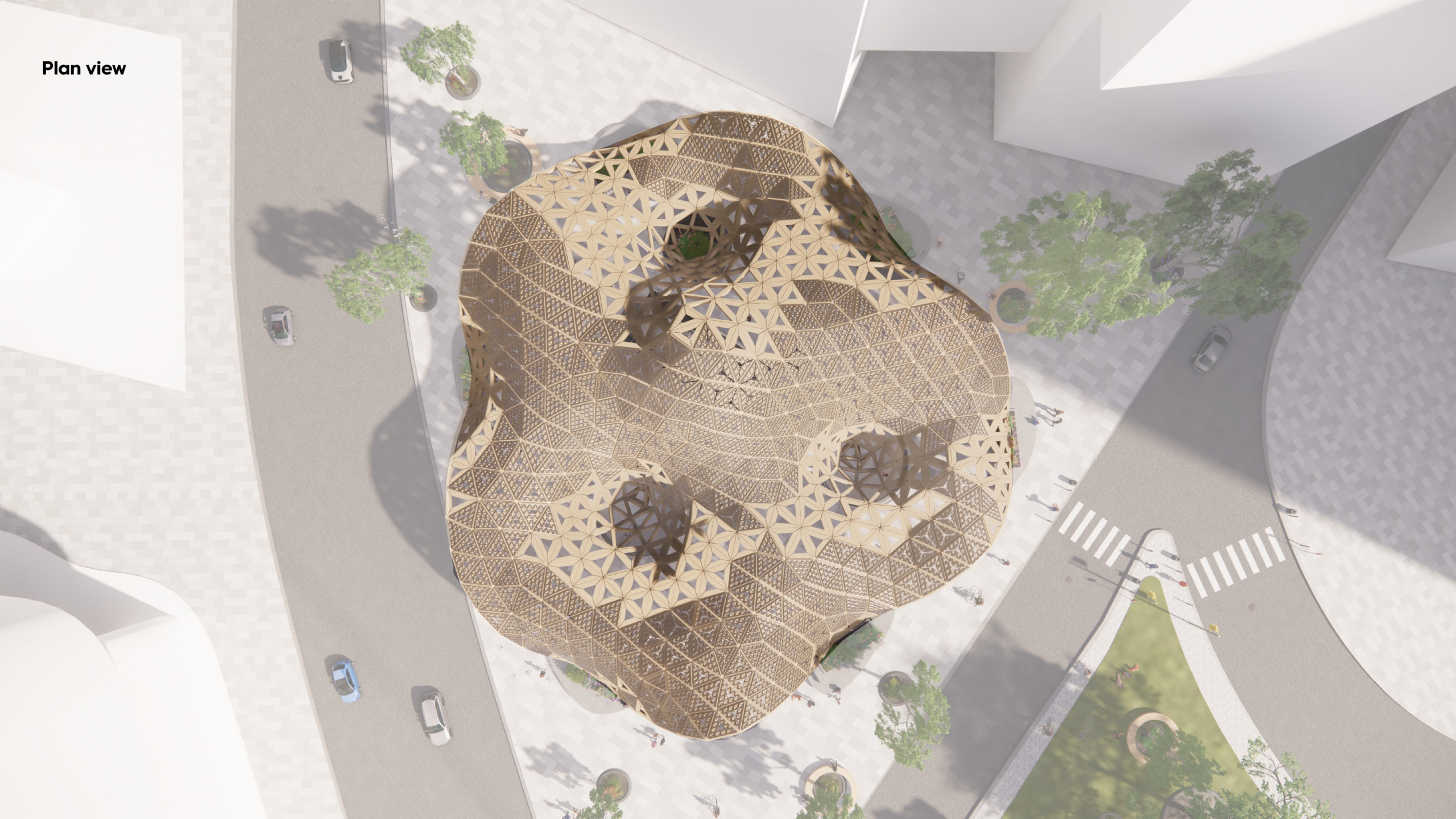
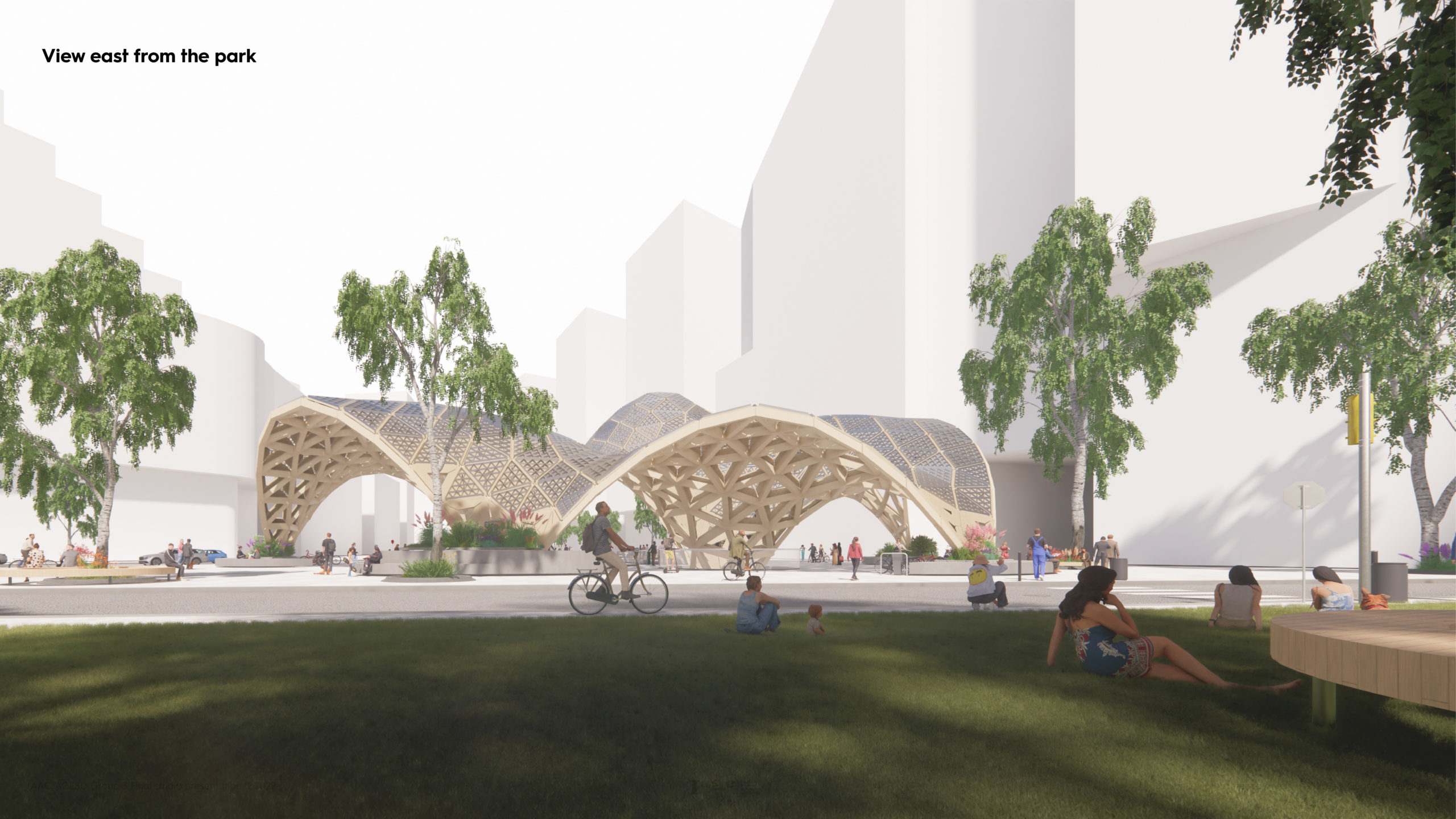
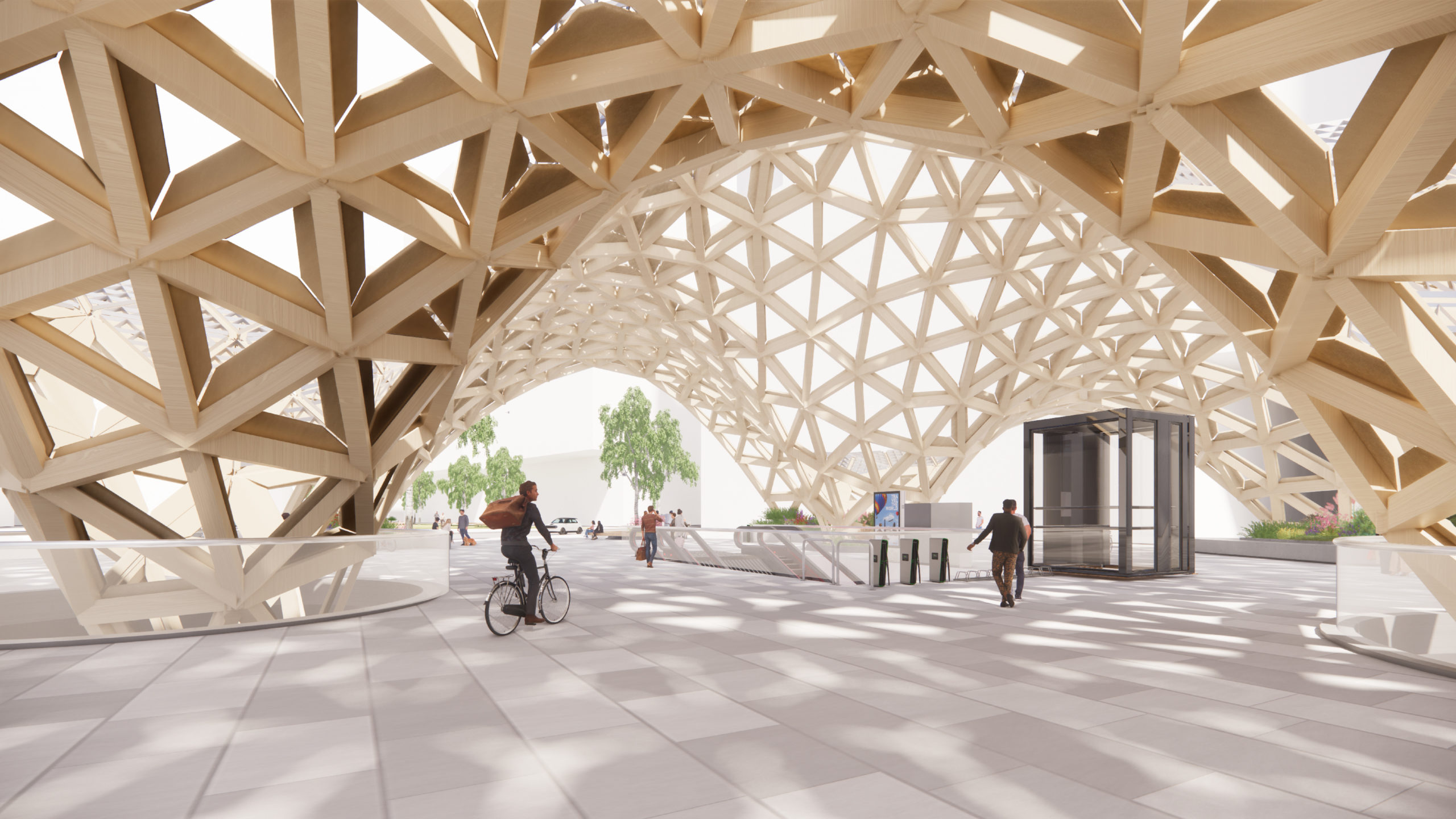
A rendered video of Climate Canopy can be seen here: [Link to video]

